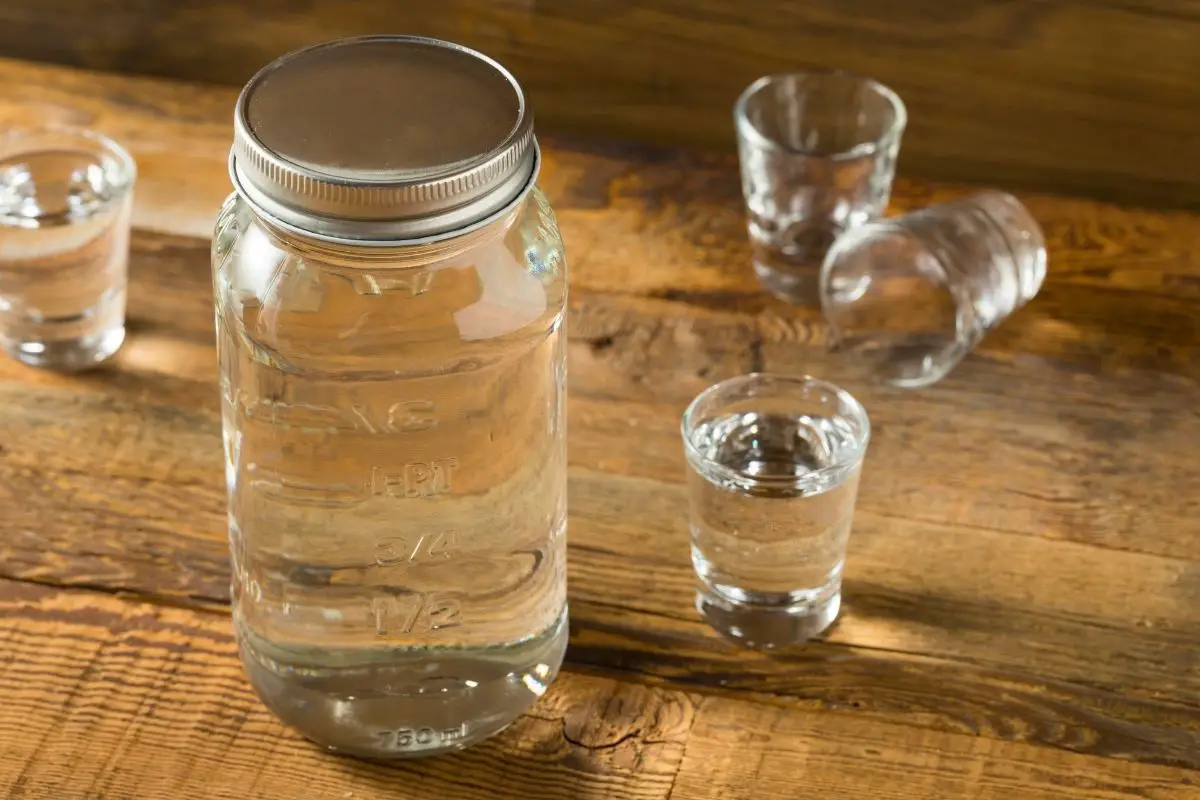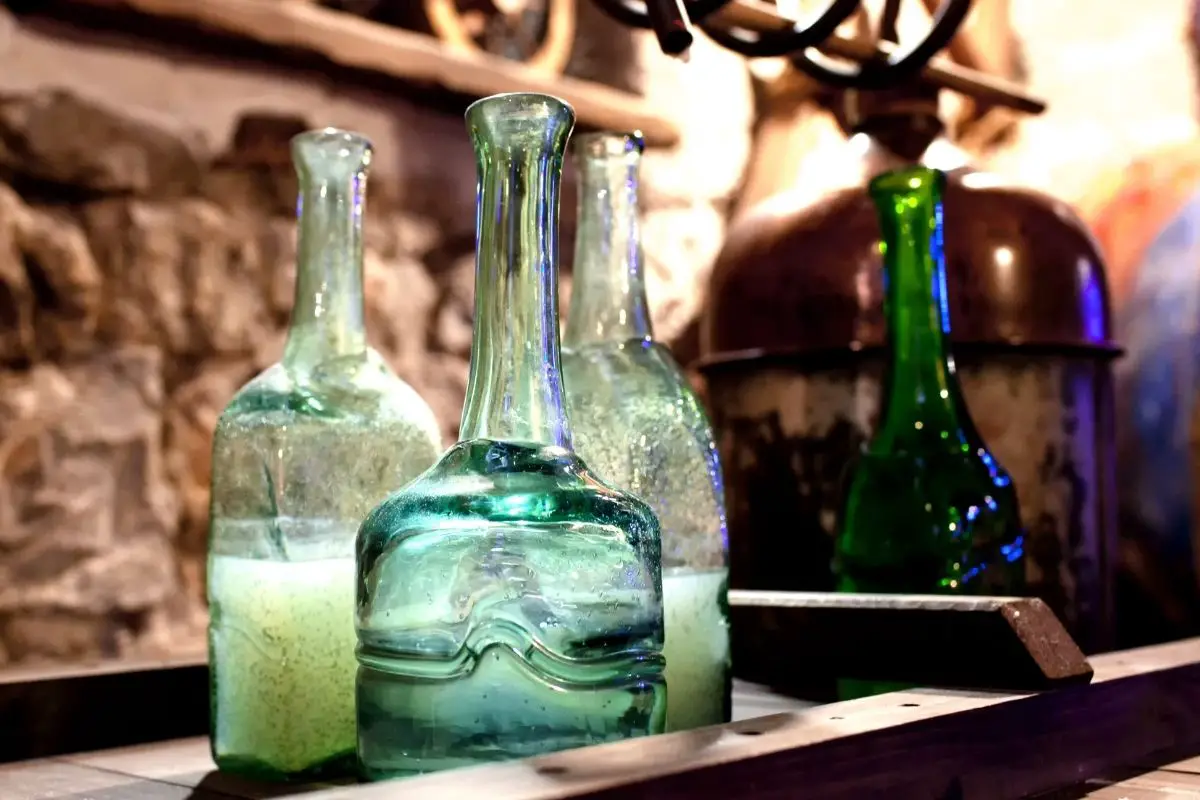Moonshine is a very high proof alcohol that is usually made in clandestine stills. The name comes from the tradition of making the drink at night and distilling at night as to avoid the authorities.
What dictates ‘true moonshine’ in the modern era is still debated.
As moonshining is an illegal and clandestine procedure, safety procedures are rarely followed and high grade scientific equipment is seldom used.

The outcome of this is some pretty shaky results that can often vary from distiller to distiller.
As a result, when moonshining, you will seldom know what the real proof of the moonshine is until it comes to the proofreading.
As mentioned, scientific tools aren’t used that often so reading proof can be pretty hard and usually involves some manual observatory skills to tell proof.
In this article we have explored what proof is, how moonshiners traditionally read their proof, and what proof moonshine commonly is. Read on to learn about moonshine and alcohol proof.
What Is Proof?
In the context of alcohol, proof is basically how much alcohol there is in a liquid, the term comes from a historical pre-scientific method for determining how strong an alcoholic drink was.
This shouldn’t be muddled up with ABV, or alcohol by volume, which is a different measurement of the same thing.
Back in 16th century England alcoholic drinks would be taxed depending on how much alcohol they contained, so auditors often needed some form of practice to tell how much alcohol there was in a liquid.
The first and most basic test of proof was simply setting the liquid alight. ‘Above proof’ was a term used to describe alcohol that was flammable, an inflammable liquid was considered ‘under proof’.
This was an inaccurate test that sought to ‘prove’ there was alcohol in a drink as it set alight, thus making it subject to a different tax bracket than ‘under proof’ alcohol.
There was also a rather dangerous and even more inaccurate way of measuring proof called the gunpowder test.
The tax collectors would soak gunpowder in the liquid, if they could still fire a gun when loaded with this gunpowder, the alcohol would be considered ‘100 proof’ (a now incorrect use of that measurement) and when the inverse happened it was considered ‘under proof’.
Both these tests were extremely inaccurate and basically could determine, with changing results, that there was alcohol present in a liquid and it should be taxed thusly.
Other methods were developed attempting to use gravity to measure alcohol but they were equally inefficient.
It was actually us Americans that created the main and most common (and also accurate) way to measure proof.
After it was discovered how to measure the percentage of alcohol in the 1800s this was then used to measure proof. For instance, if a drink was considered 50% alcohol by volume, then it was considered to be 100 proof.
How Do Moonshiners Tell Proof?
Some moonshiners don’t use these methods at all. The clandestine distillers have actually found a (still fairly inaccurate) way to tell proof that does somewhat rely on actual science.

This is known mainly as a ‘shake test’, and relies on a distiller’s experience and keen eye to be accurate. Yet, more modern methods are used in the present day.
The ‘Shake’ Test
The moonshine is placed in a mason jar, turned horizontally and then is shaken vigorously. What the distillers are looking for are the bubbles that form on the surface of the liquid.
If the bubbles are large and dissipate quickly, then the alcohol is considered to be high proof.
Many distillers think they can tell the exact measurement of proof by the size of the bubbles, but this is very scientific. When bubbles are small and stay around longer, the alcohol is considered to be underproofed.
Experienced moonshiners may be able to estimate the proof based on their knowledge and observation of the brewtime of the wort, the operation of the still as well as the potential quality of the ingredients used.
Hydrometer
The hydrometer is the most scientific and widely used way to tell proof and ABV. Since the dawn of the hydrometer it is the main tool used to test ABV and proof accurately around the world.
Yet, many moonshiners still use the shake test out of tradition.
A hydrometer essentially measures the density of the alcohol against the density of the water. There are two types of hydrometer: a proofing hydrometer and a brewing hydrometer. They are basically the same tool but use slightly different scales.
A brewing hydrometer is used to test the potential proof of a moonshine mash, before it becomes the liquid. Although it can only take measurements up to 20%, which is why it is mainly used in brewing situations.
A proofing hydrometer is mainly used to test the ABV of spirits. A proofing hydrometer can take measurements up to 100% ABV or what would be 200 proof.
What Is The Proof Of Moonshine?
As moonshine is made in a clandestine context, there is no scientific way to guarantee consistent results so to suggest moonshine is going to be one proof or the other would be fairly inaccurate.
Generally the main range you will get is anywhere from 60 proof to 190 proof.
Most commercially sold ‘moonshine’ that a bootlegger would suggest isn’t moonshine at all, is often around 60 to 120 proof. The general average proof of moonshine sold these days will most likely be around 80 proof.
This means that most moonshine will have an ABV of anywhere between 30% – 80% alcohol.
Final Thoughts
Moonshine is a strange phenomenon in the alcohol world. It isn’t really a specific drink, moonshine can vary by region and definitely by distiller, moonshine is more of an approach to alcohol making.
The concept of ‘proof’ remains fairly archaic now. While it has its uses in marketing and other smaller procedures, the original concept of ‘proof’ was mainly to prove you could tax a drink because it was alcoholic.
Moonshiners will hold to this day that commercially sold moonshine isn’t actually moonshine. For many of these bootleggers it is a tradition of clandestine alcohol production that relies on manual labor, experience, and practice.
Many moonshiners, even to this day, won’t use things like hydrometers =, mainly just to uphold their past traditions that may have been passed down to them.
So the question ‘what proof is moonshine’ can be a hard one to answer, as many moonshiners won’t know the answer to this themselves. Proof and ABV will sporadically change per the distiller and distillery.
Moonshine doesn’t follow regular alcohol rules and procedures, so it is hard to judge by the same parameters.
- Vevor Still Instructions - June 12, 2023
- Best Proofing Parrots For Home Distilling - February 1, 2023
- What Is A Porter Beer? - June 12, 2022
